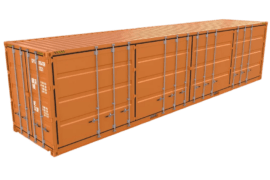Becoming a homeowner is a significant financial choice that requires an understanding of the complex mortgage life cycle. Experts in the mortgage sector as well as potential homeowners need to comprehend the various stages of this cycle. We will examine the important phases of the Mortgage Life Cycle in this blog, illuminating the complex procedure that starts with the application and continues through the years of repayment. Having completed CeMAP Courses, individuals thinking of a career in mortgage advising can gain vital insights into the intricacies of this life cycle.
Table Of Contents
- Pre-Application Phase
- Application and Approval
- Property Valuation and Legal Checks
- Offer Acceptance and Conveyancing
- Completion and Handover
- Mortgage Repayment
- Changing Circumstances
- Final Repayment and Mortgage Closure
- Conclusion
Pre-Application Phase
Prospective homeowners frequently go through a pre-application step before even starting the mortgage application process. This includes figuring out a realistic budget, reviewing credit scores, and assessing one’s financial preparedness for homeownership. This step lays the groundwork for a successful mortgage application and may be essential to averting difficulties later.
Application and Approval
The real adventure starts with the official mortgage application process. Lenders receive the financial information, work history, and property details that borrowers provide. Mortgage advisors, who frequently possess expertise from CeMAP courses, are essential in helping candidates navigate this stage. After carefully examining the application, lenders determine the value of the property and the borrower’s creditworthiness. The borrower gets a mortgage offer with the terms and conditions of the loan after it is approved.
Property Valuation and Legal Checks
The lender values the home once the application is accepted to make sure the value of the house and the loan amount match. Concurrently, legal examinations are carried out to confirm the property’s title and guarantee that no legal concerns exist. By taking these precautions, the borrower and the lender are shielded from any hazards related to the property.
Offer Acceptance and Conveyancing
The borrower formally accepts the mortgage offer after completing legal checks and obtaining a suitable value. The formal procedure of changing the ownership of real estate begins with conveyancing. Lawyers, who are frequently hired through the buyer’s conveyancer or solicitor, take care of the paperwork and make sure that all legal requirements are fulfilled.
Completion and Handover
The last phase before the borrower owns the property is known as the completion stage. The buyer pays the agreed-upon sum, and the lender advances the loan balance. The new homeowner will receive the keys once everything is finished. At this point, the house-buying process ends, and the mortgage repayment phase begins.
Mortgage Repayment
The borrower starts the repayment phase of the mortgage life cycle after the property is formally owned. Over the stipulated time, the lender receives regular payments that include principal and interest. Mortgage consultants who have completed CeMAP courses frequently help borrowers manage their payments and look for ways to improve their financial circumstances, like refinancing or remortgaging.
Changing Circumstances
Borrowers may encounter changes in their circumstances during the mortgage life cycle, such as a desire to move, a pay raise, or a job loss. Mortgage experts can help borrowers navigate these changes by using their understanding from CeMAP courses. They can advise on selling or purchasing a new property or explore possibilities like payment holidays and mortgage modifications.
Final Repayment and Mortgage Closure
The mortgage steadily decreases if the borrower makes payments. The mortgage life cycle ends with the final repayment. A statement from the lender attests to the fact that the borrower is the sole owner of the property and that the debt has been paid in full. It’s a time of achievement and financial freedom.
Conclusion
Both potential homeowners and mortgage industry experts need to understand the stages of the mortgage life cycle. After completing CeMAP courses, mortgage advisors will have the information necessary to help clients through each stage of the cycle’s complexity. The mortgage life cycle is a complex process that requires attention to detail, financial savvy, and a dedication to helping customers achieve their homeownership goals from the time of the initial application to the time of the final payments. Understanding the subtleties of this life cycle will make your experience in the fast-paced world of real estate financing easier and more educated, regardless of whether you’re a seasoned mortgage professional or a prospective homeowner.






